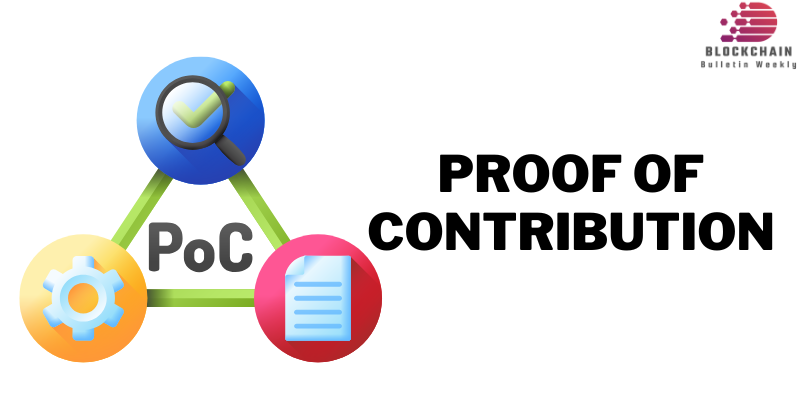How can we fairly assess the contributions of each individual in a project? Proof of Contribution is the answer you’re looking for. Discover how to optimize work efficiency and motivate your team.
What is proof of contribution?
Proof of Contribution is a consensus mechanism in blockchain designed to identify and recognize the contributions of network participants. Unlike traditional mechanisms like Proof of Work (PoW) or Proof of Stake (PoS), PoC focuses on evaluating user actions and contributions to determine the right to create new blocks.
Proof of Contribution (PoC) is a consensus mechanism where users earn contribution points based on their activity in the network. The user with the highest contribution score in each round is selected to create a new block.
To participate, users must stake collateral. The more active a user is and the more they stake, the higher their contribution score.
PoC ensures decentralization and resistance to hard forks without relying on cryptocurrency, making it ideal for non-financial applications. It rewards participation over financial investment.
Advantages of Proof of Contribution
Proof of Contribution (PoC) offers high decentralization, ensuring power isn’t concentrated in the hands of a few, which creates a fairer environment for all participants. It also reduces energy consumption since it doesn’t rely on heavy computational power like Proof of Work.
This makes PoC more efficient and suitable for non-financial applications. Transparency is another advantage, as every action and contribution made by users is recorded, building trust within the community.
By rewarding active participation, PoC motivates users to contribute more, leading to a more engaged network. Its versatility allows it to be applied across various fields, such as intellectual property protection and data management, expanding blockchain’s potential.
Moreover, PoC maintains the security of blockchain without relying on cryptocurrency, ensuring a reliable and trustworthy system.
Real-World Applications of Proof of Contribution
Proof of Contribution (PoC) has a wide range of real-world applications. In intellectual property protection, PoC can verify and record contributions from creators or developers, ensuring their rights are protected and fostering transparency.
In data management, PoC tracks user contributions in data entry or processing, ensuring accuracy and encouraging active participation. PoC also plays a key role in decentralized finance (DeFi), where it can assess user contributions in liquidity provision or transactions, leading to fairer reward distribution based on actual involvement rather than just token holdings.
The Future of Proof of Contribution in Blockchain
The future of Proof of Contribution (PoC) looks bright, with a focus on improving efficiency and expanding its use. By integrating Artificial Intelligence (AI), PoC can more accurately assess contributions and speed up the process. Combining PoC with other consensus mechanisms like Proof of Stake (PoS) or Proof of Work (PoW) could also enhance both performance and security.
PoC’s applications will grow, especially in data management in sectors like healthcare and education, where individual contributions matter. In decentralized finance (DeFi), it will help ensure fairer rewards based on real contributions.
With its high transparency and ability to prevent fraud, PoC will build trust and create more secure, sustainable blockchain networks. As the technology evolves, PoC will play an even bigger role in shaping blockchain’s future.
Implementing a Proof of Contribution system can help organizations improve efficiency, decision-making, and transparency. By recognizing individual contributions, PoC fosters ownership and commitment among employees. For more information on how PoC can benefit your organization, check out Blockchain Bulletin Weekly.

